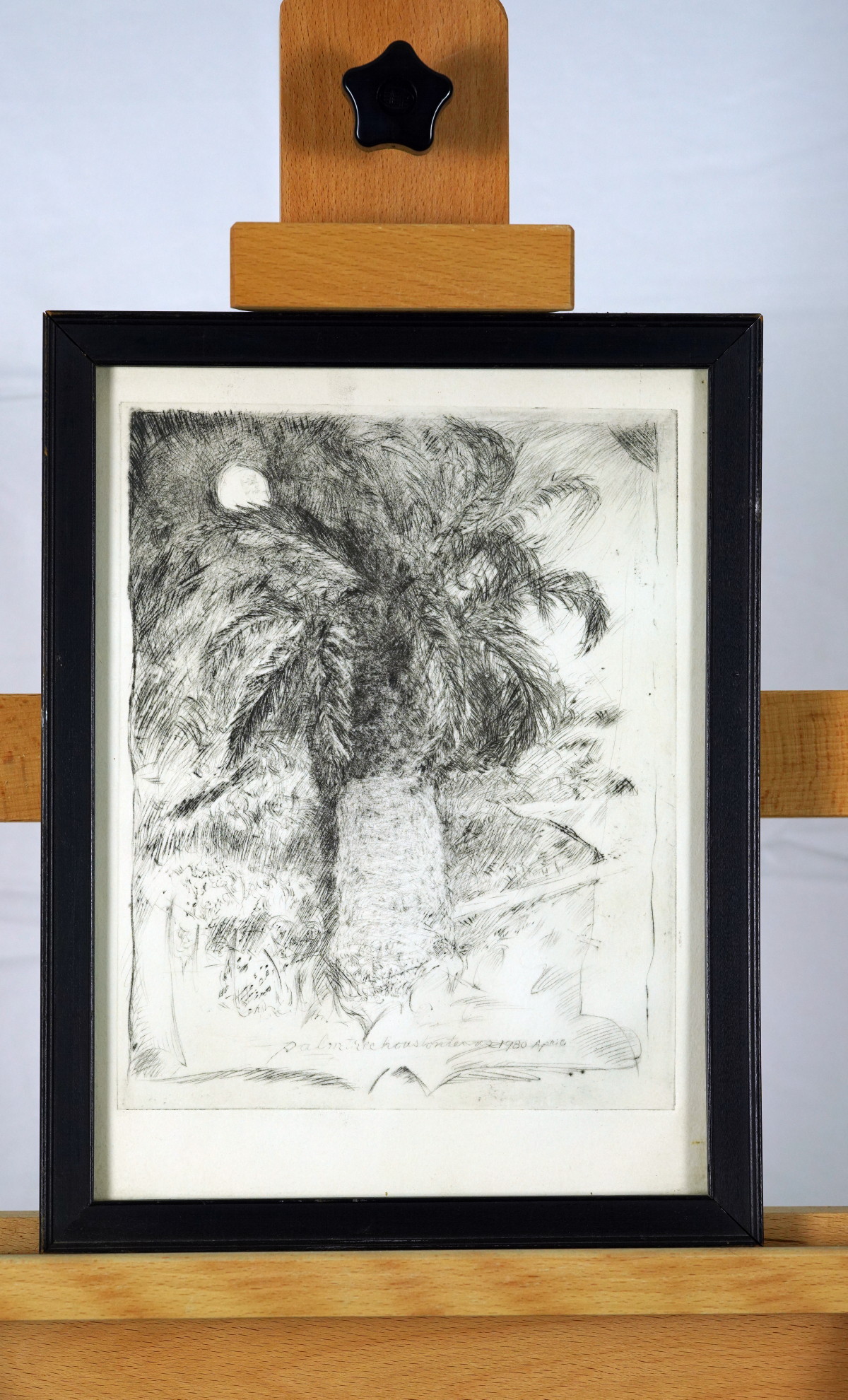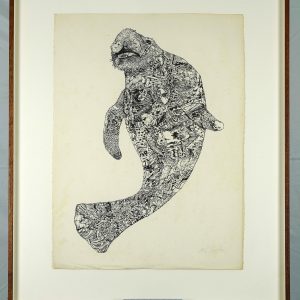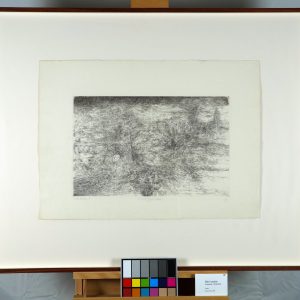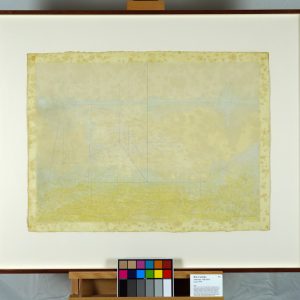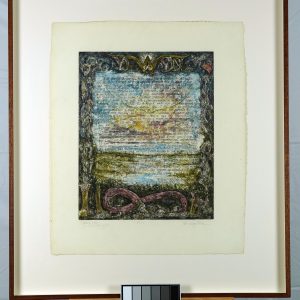Description
palm tree houston texas, 1980
Lithograph Little Egypt Enterprises
Unsigned (what is the reason for this?)
10 x 8 in. (image)
13.25 x 10 in. (frame)
original, includes certificate of authenticity from ArtTrust
The drawing “Palm Tree Houston Texas” features a tall, textured palm tree, with its fronds extending outward and upward, filling much of the composition. The moon is visible in the background, suggesting a night scene. The sketchy, monochromatic lines create a sense of movement in the foliage, and the rough texture emphasizes the tree’s rugged nature.
In Zen Buddhism, nature is often viewed as a mirror for inner reality, where the external world reflects the internal state. The palm tree’s upward-reaching branches can symbolize aspirations toward enlightenment or the unfolding of consciousness. The moon, often associated with illumination in Zen poetry, represents the mind’s clarity when free from distraction. Here, the placement of the moon amidst the chaotic branches could suggest the constant struggle for a peaceful mind amid life’s turbulence.
Relating this to the I Ching, the Hexagram “Ta Kuo” (28, Great Excess) could be evoked. This hexagram is associated with exceeding limits and the tension between strength and flexibility. The tree’s resilience and struggle against the forces of nature, reaching for the moon, symbolizes the balance needed to overcome difficulties. The scene suggests the need for inner strength to maintain balance, even as external forces may seem overwhelming.
The palm tree represents resilience and the pursuit of higher truth or meaning. In reaching upward, it reflects the human condition—forever striving amidst adversity. The moon adds a contemplative element, suggesting that enlightenment is not found in the absence of struggle, but through the mindful engagement with it. The rough texture of the drawing further emphasizes that life is not smooth, but filled with imperfections, and true strength is found in embracing this reality.
The style of the sketch aligns with elements found in expressionism, where the emotional quality of the subject is emphasized through texture and line work. The use of monochrome and the rough strokes suggest a connection to the works of artists like Vincent van Gogh, who often captured nature’s movement and raw essence. The subject matter, a single tree, evokes a tradition of depicting nature as a metaphor for human experience, frequently explored in Asian art and Western modernism.
This structured approach reveals layers of interpretation, linking the visual aspects to Zen, I Ching philosophy, and art historical context. The palm tree becomes more than a subject—it transforms into a representation of the human journey.
*Shipping cost will vary, please inquire at sales@camblingallery.com before purchasing.
Currently ships from Oregon, USA
Member of artnet? Apply for a discount! Inquire about intergallery and permanent loans for museums.
Dry point etching from Little Egypt Enterprises.
Reproductions of this drawing are available in multiple sizes!
Click here to use our high-resolution viewer!
This artwork is available with a non-fungible token to ensure traceability and transparency of provenance.
The royalty factor – Unlike traditional artworks, such as paintings, mosaics, statues, and the like, NFTs can be programmed to provide royalties to you every time the painting (and token) is sold and resold – for eternity. That mind-bending Camblin you sold could be worth millions one day and provide income for your great-great-great grandkids!
Anti-forgery – The central idea underpinning NFTs is that they are built on the blockchain, which is meant to offer advanced security. Think of it like an un-erasable and un-avoidable copyright.
Easy authentication – Another compelling aspect of NFT art and NFTs in general is the ability to quickly and easily authenticate items, as the record of ownership is scrupulously kept on the blockchain.
